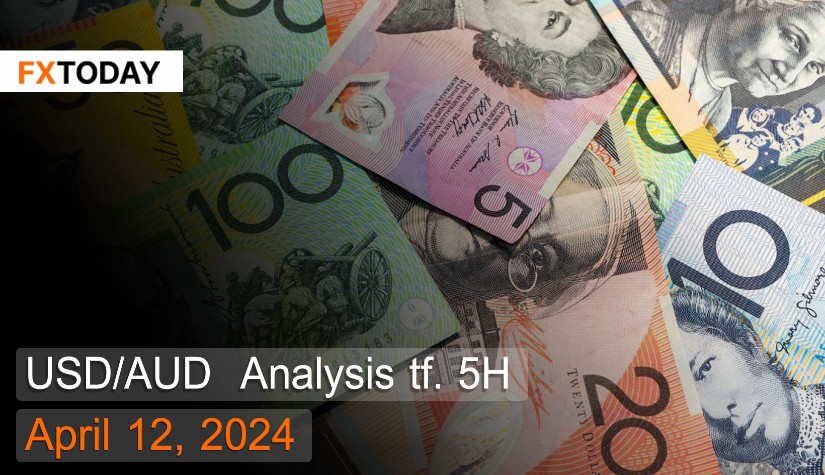The inflation rate of Australia may rise again.
The Australian dollar weakens further following higher-than-expected CPI in the United States, which has rapidly strengthened the US dollar. Currently, more than 70% of investors anticipate that the Fed's interest rates will remain at their current high levels, with only 47.8% expecting a rate cut in July. In Australia, investors expect the central bank to start lowering interest rates by the end of this year, but strong employment data and increasing inflationary pressures have made the central bank's stance uncertain.
Consumer inflation expectations in Australia rose to 4.6% in April, marking another increase amid rising cost pressures, especially in service sector prices, and uncertainties in the economy due to high inflation and interest rates.
Michele Bullock, the Reserve Bank of Australia's governor, recently stated that the board wants to be more confident that inflation will return to target within a reasonable timeframe before considering further rate hikes, after raising rates by a total of 425 bps over the past two years, keeping annual inflation at 3.4%, supported by slowing commodity prices.
Retail sales in Australia increased by 0.3% month-on-month in February, significantly slower than the 1.1% growth in the previous month, indicating reduced household spending, which may also reflect declining consumer confidence. Sales at cafes and restaurants, particularly for takeaway, notably declined, though personal care product sales continued to rise.
The Composite PMI rose to 53.3 in March, driven by accelerated private sector production growth in Australia's first quarter, mainly led by robust growth in services despite ongoing contraction in manufacturing. Increased production was partly supported by modestly higher new orders, but employment growth started to slow.
The value of housing loans increased by 1.6% month-on-month to AUD 16.87 billion in February, slightly lower than the market's expectation of 2.25%, but rebounding from a 0.9% decrease in the previous month amid recovering home purchases. However, residential construction continued to decline consistently.
Techical analysis data (5H)
Resistance: 1.5494, 1.5531, 1.5593
Source: Investing.com
Buy/Long 1: If the price touches support in the price range of 1.5333 - 1.5395 but cannot break the support at 1.5395, you may set a TP at approximately 1.5531 and SL at around 1.5297 or according to your acceptable risk.
Buy/Long 2: If the price breaks the resistance in the price range of 1.5494 - 1.5531, you may set a TP at approximately 1.5593 and SL at around 1.5333 or according to your acceptable risk.
Sell/Short 1: If the price touches resistance in the price range of 1.5494 - 1.5531 but cannot break the resistance at 1.5494, you may set a TP at approximately 1.5333 and SL at around 1.5593 or according to your acceptable risk.
Sell/Short 2: If the price breaks the support in the price range of 1.5333 - 1.5395, you may set a TP at approximately 1.5297 and SL at around 1.5531 or according to your acceptable risk.
Pivot point April 12, 2024 10:17 AM. GMT+7
|
Name
|
S3
|
S2
|
S1
|
Pivot Points
|
R1
|
R2
|
R3
|
| Classic | 1.5297 | 1.5333 | 1.5395 | 1.5432 | 1.5494 | 1.5531 | 1.5593 |
| Fibonacci | 1.5333 | 1.5371 | 1.5394 | 1.5432 | 1.547 | 1.5493 | 1.5531 |
| Camarilla | 1.5429 | 1.5438 | 1.5447 | 1.5432 | 1.5465 | 1.5474 | 1.5483 |
| Woodie's | 1.5309 | 1.5339 | 1.5407 | 1.5438 | 1.5506 | 1.5537 | 1.5605 |
| DeMark's | - | - | 1.5413 | 1.5441 | 1.5512 | - | - |
















